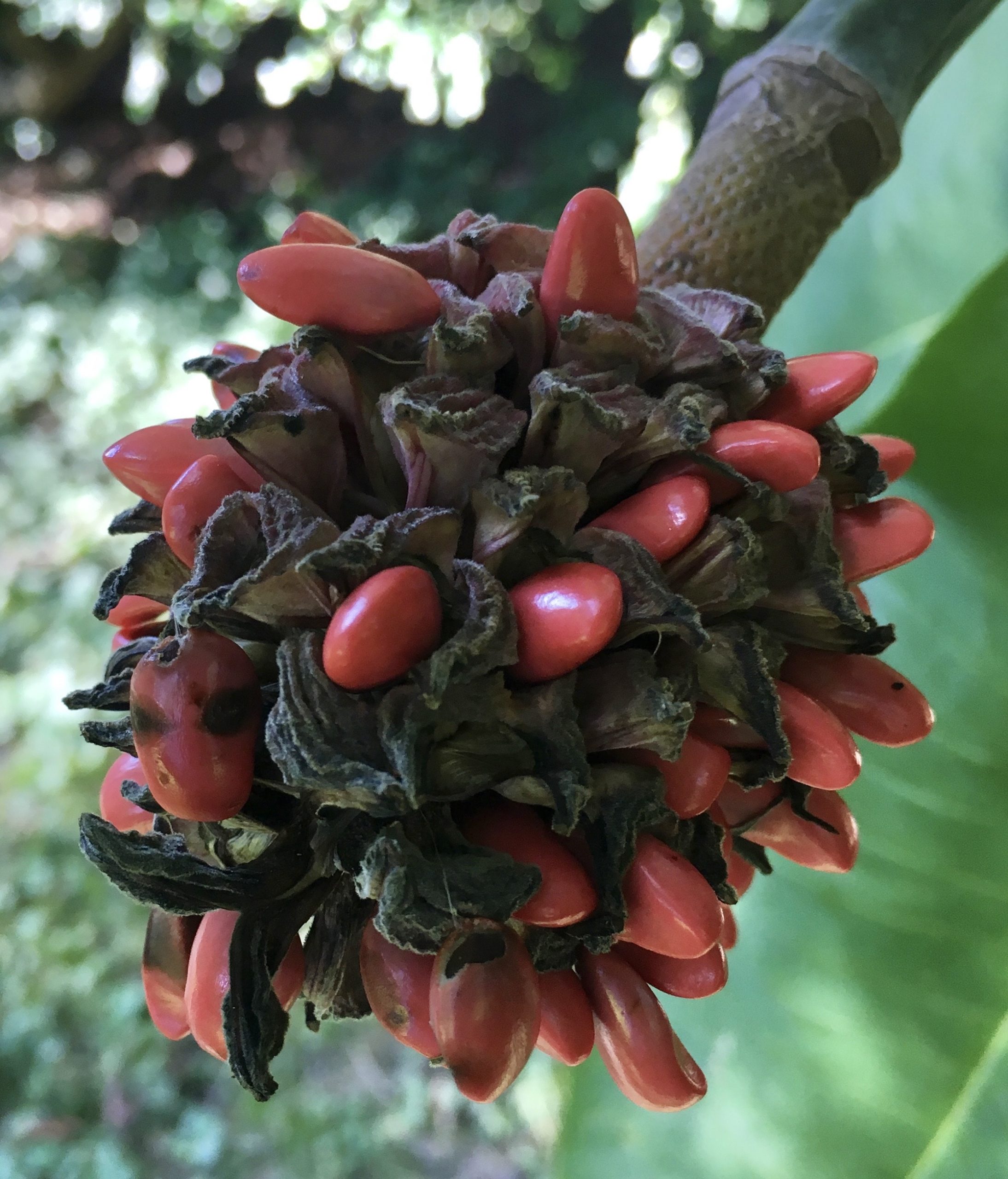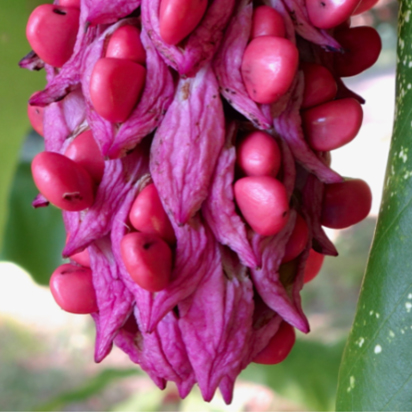
Bigleaf Magnolia
Magnolia macrophylla ssp. macrophylla
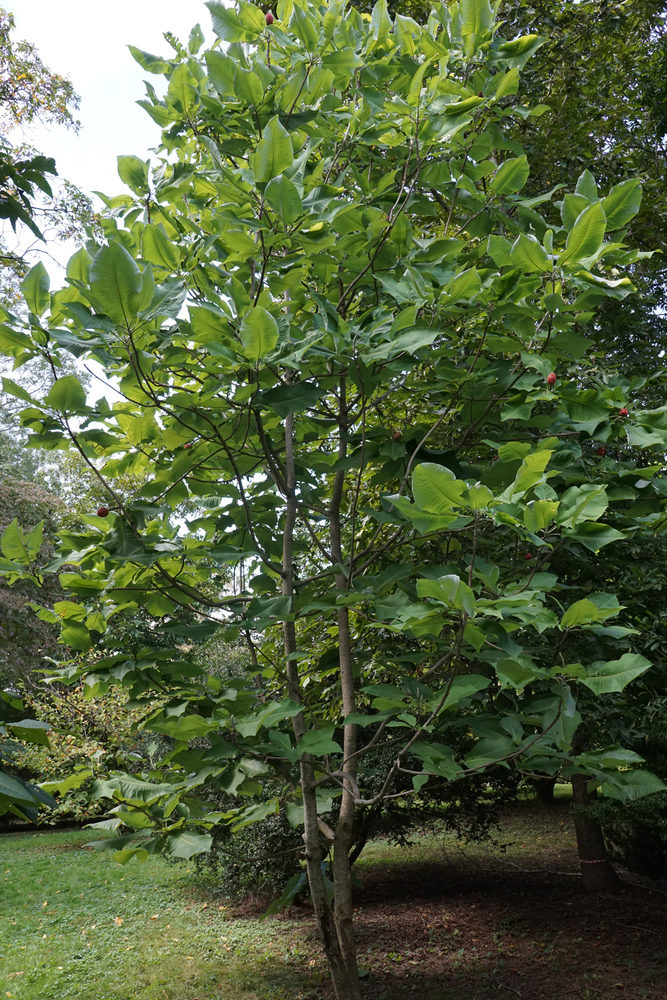
- Accession Number
- The alpha-numeric value assigned to a plant when it is added to the living collection as a way of identifying it.
- Accession Date
- The year the plant’s accession number was assigned.
- Common Name
- The non-scientific name for the plant.
- Scientific Name
- The scientific name describes the species of an organism. The first word is the plant's scientific genus and the second is the specific epithet. This two-word binomial is sometimes followed by other taxonomic descriptors, including subspecies (denoted by "ssp."), variety (denoted by "var."), form (denoted by "f." or "forma"), and cultivar (denoted by single quotation marks).
- Plant Family
- The family to which the plant belongs.
- Propagation Material
- The first part (material code) describes the material used to create the plant. The most common codes are "SD" (seed), "EX" (existing plant), "PT" (plant), "CT" (cutting), "SC" (scion), "SG" (seedling), and "GR" (graft). The second part describes the lineage the plant is derived from. The last part describes the year of propagation.
- Collection Data
- The first part indicates provenance (place or source of origin) using a letter code ("W" = wild, "G" = garden, "Z" = indirect wild, "U" = uncertain). The second part lists the plant source. For wild-collected material, the collector, collection number, and country are given.
- Location
- The location of the plant on the landscape.
E. JOHNSON, HOLDEN ARB.
ORIG FROM R. MCNEIL, UNIV. OF KENTUCKY
This striking species captivated North America's first plant explorers.
In the summer of 1775, an American naturalist named William Bartram encountered a striking tree among the lowland forests not far from Mobile, Alabama. Taken with the unusual specimen, Bartram offered a wonderful description in his journal, which would become one of America’s first publications on natural history, Travels:
“…how gaily flutter the radiated wings of the Magnolia auriculata, each branch supporting an expanded umbrella, superbly crested with a silver plume, fragrant blossom, or crimson studded strobile and fruits.”
The “radiated wings” and “silver plume” lovingly captured by the young explorer most likely belonged to what we recognize today as bigleaf magnolia (M. macrophylla), a giant among deciduous trees—at least in terms of its component parts. Bigleaf magnolia sports the largest simple leaf of any temperate North American tree, reaching a length of 30 inches. Enormous blossoms, spanning a foot, are a fitting accompaniment to its paddle-like foliage. This native of the southeastern U.S. is relatively uncommon, preferring the rich, loamy soils and semi-shade of mesic Mesic: A habitat with a well-balanced supply of moisture. woodlands, where it grows to 65 feet or more.
The flowering process of bigleaf magnolia is no less fascinating than its oversized anatomy. Beginning in June, upright flower buds swell and peel back to reveal six ivory-colored tepals Tepal: A petal-like flower part that cannot be classified as either petal or sepal. . During the first evening of flowering, female organs (stigmas) are exposed for a short period of time, while their strong fragrance attracts nearby pollen-laden insects. Tepals then close around the entranced pollinators as they scramble over maternal parts in search of nectar. A day later, the flower opens once more—this time as male organs (stamens) actively shed pollen. This temporal separation of female and male phases, called protogyny, helps prevent self-pollination, which can prove detrimental to offspring.
The primordial charm of bigleaf magnolia was not lost on William Bartram, whose apt description marks one of the earliest recorded encounters with the elusive species. However, in referring to his plant M. auriculata, Bartram had confused it with a similar magnolia species found slightly further north, for which he used the same name (which we know today as mountain magnolia, M. fraseri). Despite his timely observation, Bartram never distinguished M. macrophylla as a distinct species. That task would fall to André Michaux, a French botanist and explorer, who is credited with naming the species and introducing it to European gardens around 1800, not long after Bartram’s discovery.
Today, bigleaf magnolia is featured alongside other specimen plants in botanical gardens and arboreta throughout the temperate world. Arnold Arboretum accession 299-2001*A was collected in Daniel Boone National Forest, Kentucky, along Jellicoe Creek. In summer of 2001, it found its way to the Arnold Arboretum where it was received as a young plant and raised up before being planted on the grounds. Two decades later, its remarkable foliage, flowers, and fruit can be enjoyed—along with dozens of other kinds of magnolias—among the Arboretum’s Living Collections.
United States
Viewing this plant in-person? Look for these defining characteristics:
About Our Collection
Fun Facts
Stats
- Living Specimens
- Specimens Dead or Removed
- First Addition
- Most Recent Addition
- Tallest Specimen
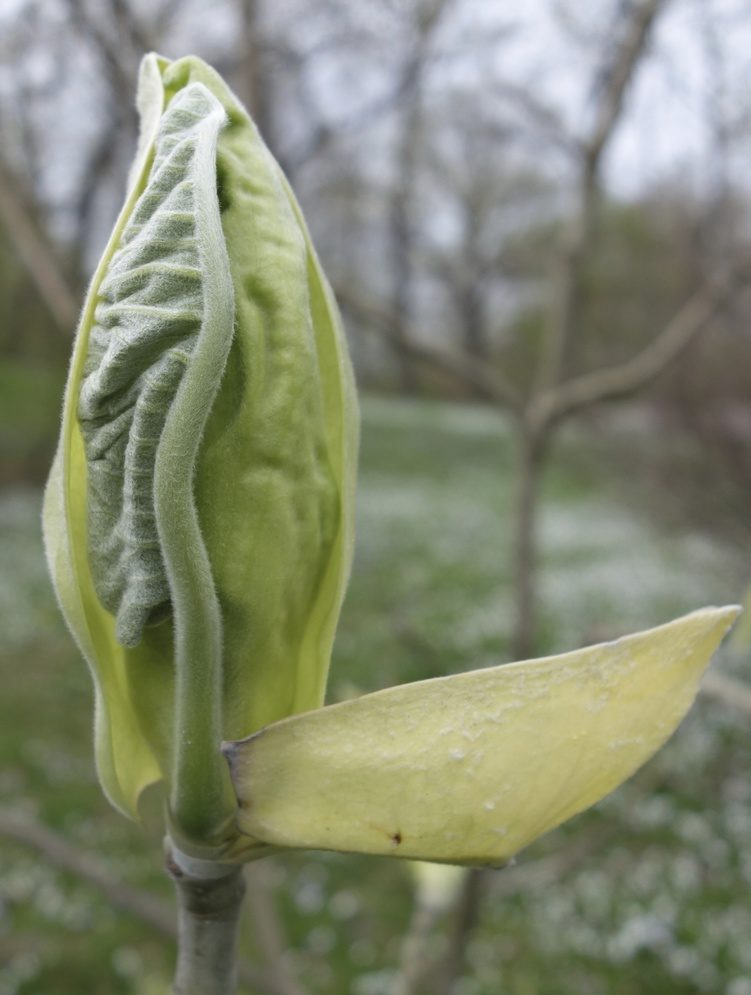
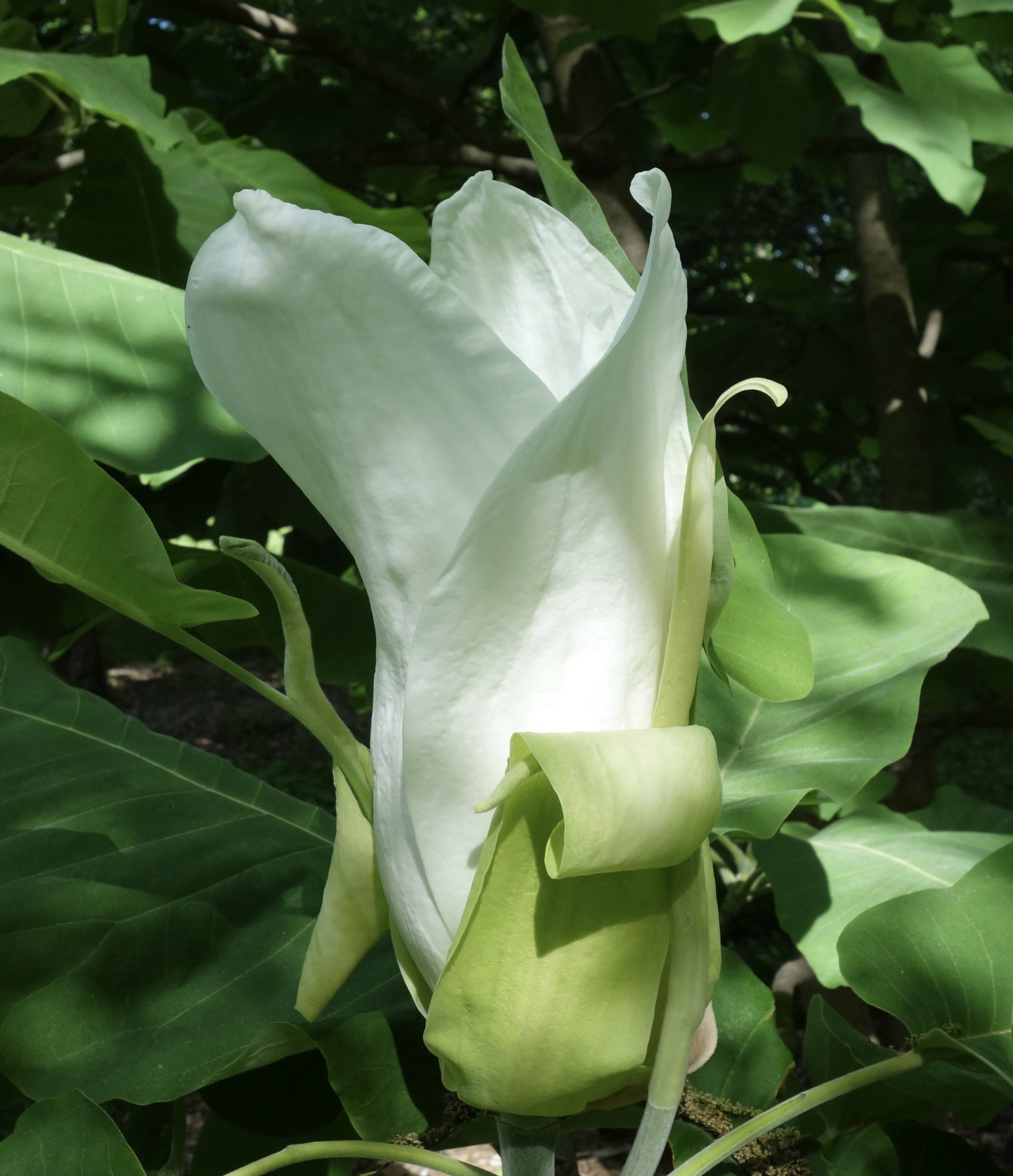
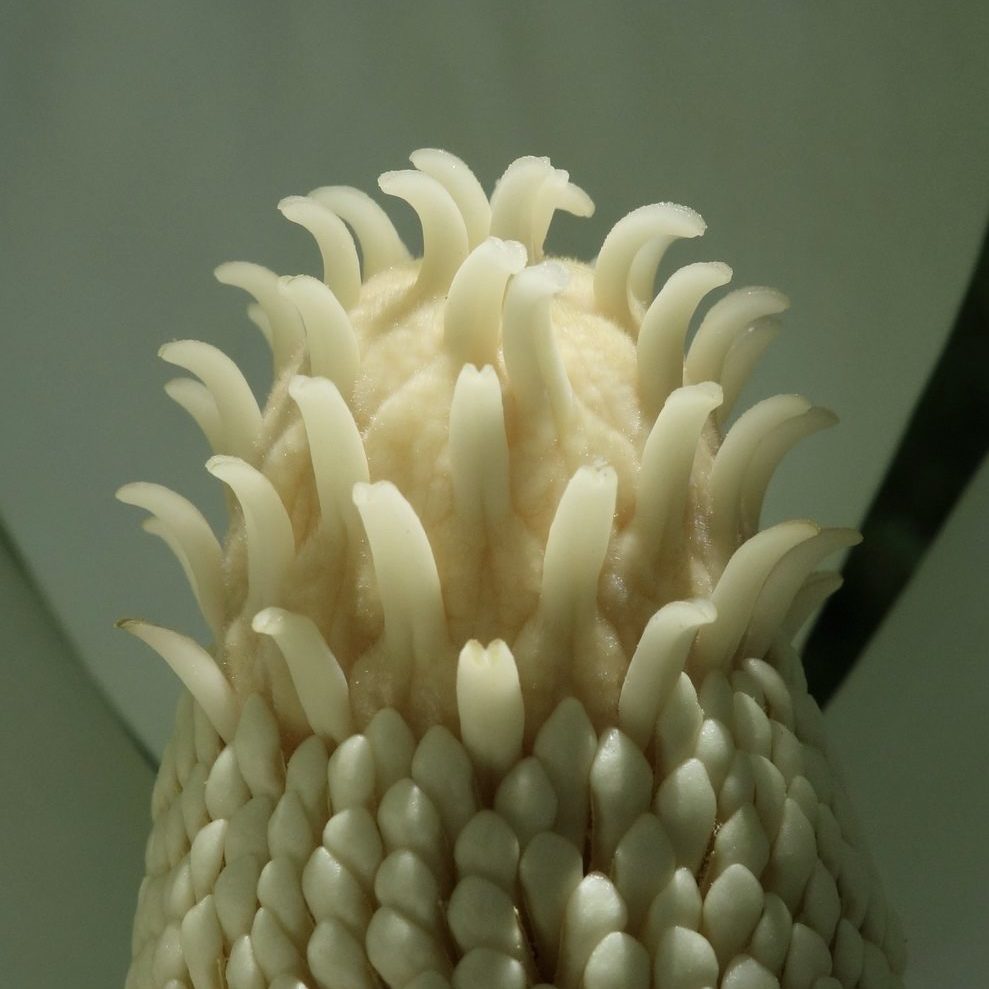
Living Specimens
| Plant ID | Accession Date | Received As | Origin | Source |
|---|---|---|---|---|



